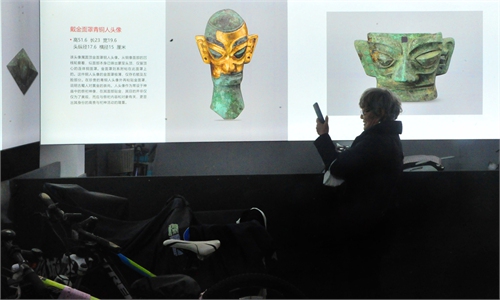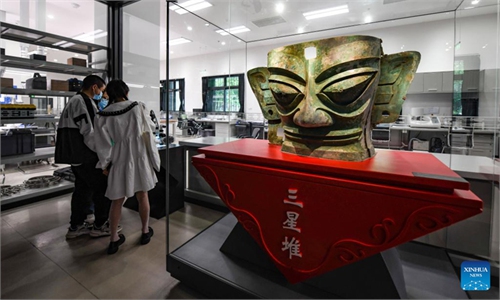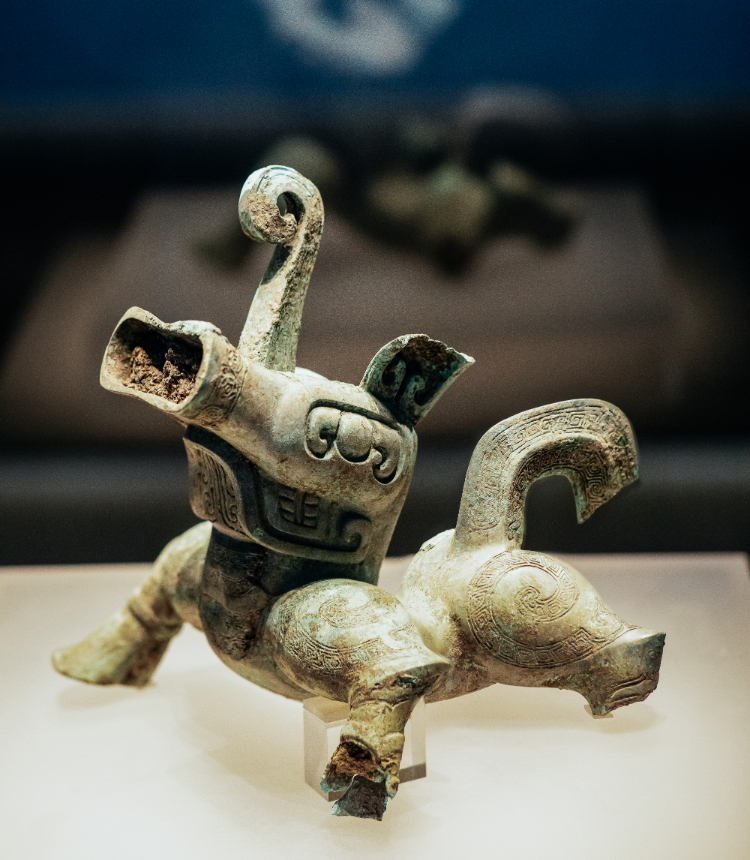
Photo: courtesy of the Yibin Museum
Two more cultural relics from the sought-after Sanxingdui Ruins in Southwest China's Sichuan Province debuted at the Yibin Museum, along with a number of other popular items, on this year's International Museums Day, which fell on Wednesday. "Robotic dog," "Ultraman," "Zhuge Liang…" these adorable names were given to relics by thrilled museum-goers and netizens, who were stunned by the wisdom of their ancestors.One bronze mythical creature soon became a hit on Chinese social media for its appearance, as it looks incredibly like a robotic dog. With its body decorated with cloud and thunder stripes, the "beast's" four limbs crouch on the ground while its head is held high. While its ears and tail are damaged, the overall appearance is still robust and powerful.
According to a document that the Sanxingdui Archaeological Institute sent to the Global Times on Wednesday, the artifact was dug from the No.3 pit, with a length of 28.5 centimeters, height of 26.4 centimeters and width of 23 centimeters.
The Sichuan Provincial Cultural Relics and Archaeology Research Institute, together with the Sanxingdui Museum, has co-launched a global campaign to name the artifact.
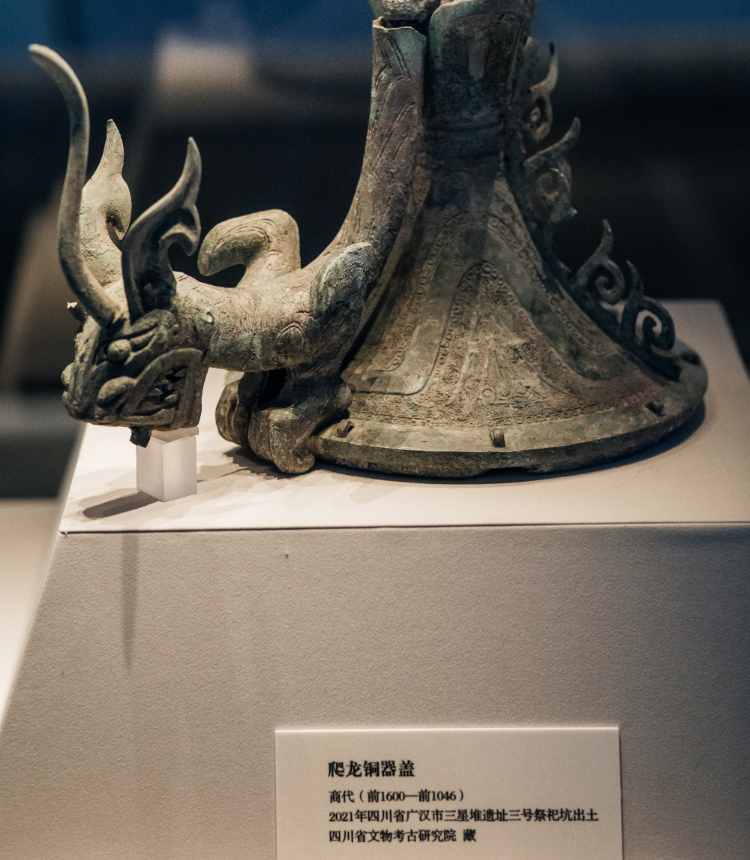
Photo: courtesy of the Yibin Museum
A bronze relic shaped like a crawling dragon that functioned as a cover was also shown to the public for the first time, the Global Times learned.
Nearly 200 fine relics gathered from some 20 cultural sites in various areas of Sichuan and Chongqing are collected at the Yibin Museum, it said in a statement sent to the Global Times. Among them, two artifacts lately unearthed from the Sanxingdui Ruins have seized people's attention. One is a standing bronze figure with a head shaped similar to that of the famous anime character Ultraman, and the other is "wearing" a tall hat like the one that Chinese military strategist Zhuge Liang wore in ancient times.
"It seems that ancient people had a magical connection with modern life," commented some netizens on China's Twitter-like Sina Weibo.
Ran Honglin, head of the archaeological team at the Sanxingdui Ruins, told the Global Times on Wednesday that the two relics further demonstrate the superb bronze craftsmanship in the ancient Shu and proved that "the ancient Shu culture is an important part of Chinese civilization."
"The Sanxingdui site held many such cute creatures of the same type," Ran said. "The 'family of beasts,' which all look alike, reflects an immortal world imagined by the ancient Shu people. As the excavations continue, the 'family' is expected to add new members," he said.
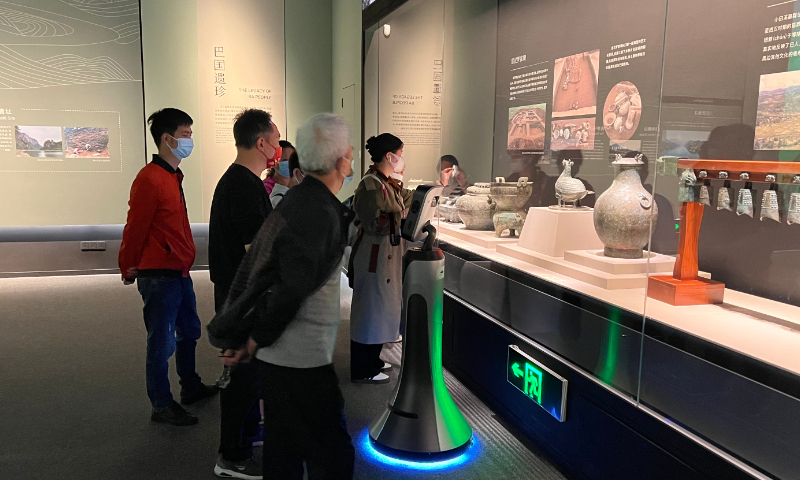
Photo: courtesy of the Yibin Museum
Moreover, a number of digital services have been introduced as new ways to tour the museum, including AR glasses and intelligent robots, the Global Times learned from the Yibin Museum. Through these new functions, spectators will have easy access to explanations on the spot through voice commands, and can also scan codes on each relic to gain more information.
With an all-round unique experience touring the museum, visitors can appreciate the ancient wisdom more closely and from a variety of angles. "Letting the cultural relics come alive," that is one of the highlights in this year's exhibition, the museum said.
A staffer with the museum told the Global Times that despite severe epidemic situations in some parts of the country, tickets were all sold out on Wednesday as tourists flooded in.
In March, the Sanxingdui Ruins were named as one of China's top 10 archaeological discoveries of 2021 by China's National Cultural Heritage Administration.
The Sanxingdui Museum, where most relics from the site are stored, also launched activities on Wednesday to celebrate the annual event, including hosting the finals for a competition of creative cultural products of Sanxingdui.
In 2021, the tourism potential of the Sanxingdui Museum was unprecedentedly released, with the number of visitors reaching 1.47 million, a record-high increase of 381 percent, ranking among the hottest tourist sites in Sichuan.
Discovered in the late 1920s, the site has been called one of the world's greatest archaeological finds of the 20th century. They are believed to be the remnants of the Shu Kingdom, which survived for more than 2,000 years. The ruins date back at least 4,800 years.

